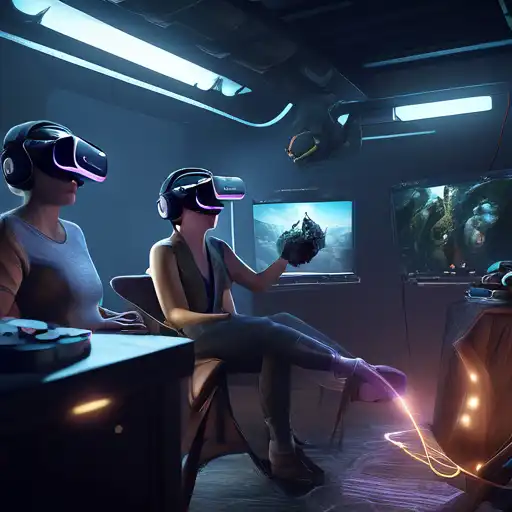Introduction to Virtual Reality Development
Virtual Reality (VR) has transformed from a futuristic concept into a tangible, immersive technology that's reshaping entertainment, education, and beyond. Creating immersive VR experiences requires a blend of creativity, technical skill, and an understanding of human perception. This guide will walk you through the essential steps to craft VR experiences that captivate and engage.
Understanding the Basics of VR
Before diving into development, it's crucial to grasp the fundamentals of VR technology. VR creates a simulated environment that users can interact with in a seemingly real or physical way. This is achieved through headsets, motion tracking, and immersive audio, among other technologies.
Key Components of Immersive VR Experiences
- High-Quality Visuals: The cornerstone of any VR experience, high-resolution graphics and smooth frame rates are essential to prevent motion sickness and ensure immersion.
- Intuitive Interaction: Users should be able to interact with the VR environment naturally, using gestures, voice commands, or controllers.
- Engaging Audio: Spatial audio enhances the sense of presence, making sounds appear to come from specific directions within the virtual space.
- Comfortable Navigation: Movement within VR should feel intuitive and comfortable, avoiding any disorientation or nausea.
Step-by-Step Guide to Creating Your VR Experience
Developing a VR experience involves several stages, from conceptualization to deployment. Here's a simplified overview:
- Conceptualization: Define the purpose and scope of your VR experience. What emotions or reactions do you want to evoke?
- Design: Sketch out environments, characters, and interactions. Consider user comfort and accessibility from the start.
- Development: Use VR development platforms like Unity or Unreal Engine to bring your designs to life.
- Testing: Gather feedback from testers to refine interactions, visuals, and overall experience.
- Deployment: Publish your VR experience on platforms like Oculus Store or SteamVR, ensuring it's optimized for your target hardware.
Optimizing for SEO and Visibility
To ensure your VR project reaches its intended audience, incorporate SEO strategies from the outset. Use relevant keywords in your project's title, description, and promotional materials. Engage with communities on social media and VR forums to build anticipation and gather feedback.
Conclusion
Creating immersive VR experiences is a challenging yet rewarding endeavor. By focusing on quality, interactivity, and user comfort, you can develop VR applications that stand out in a rapidly growing market. Remember, the key to success lies in continuous learning and adaptation to new technologies and user expectations.
For more insights into VR development, check out our guide on essential VR development tools and tips for optimizing VR performance.
